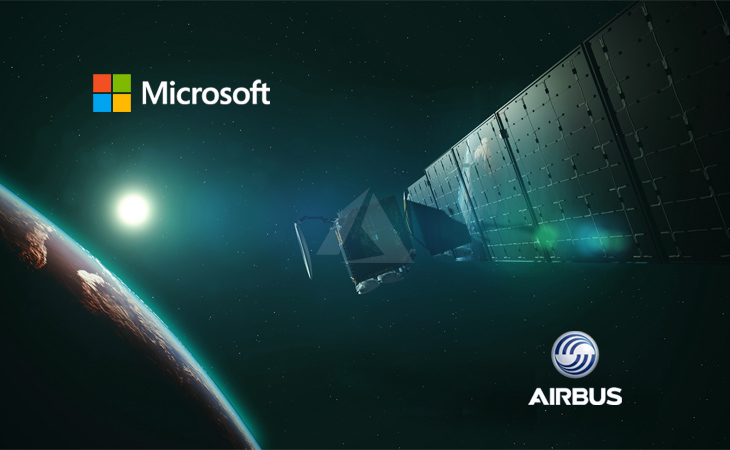Late last year, Microsoft announced Azure Space, a suite of cloud products for powering space organizations. This is primarily aimed to make Azure significant in the space and satellite market where cloud computing is required. Going by the same spirit, Microsoft, last week, has expanded Azure Space by partnering with the aerospace giant Airbus.
After much ado, Microsoft has revealed that Azure Space will feature satellite imagery from Airbus and communication links from ST Engineering iDirect. In addition, the Windows manufacturer ingrain their cloud with geospatial data from Esri, Blackshark.ai, and Orbital Insight.
Elaborating further, Microsoft stated that Azure Orbital, now available for public preview, allows its space customers to communicate and control satellites using Microsoft’s or its partners’ ground stations. The IT company also forayed into multispectral imagery with Space Eye, an AI program that provides cloud-free optical output.
Also Read: Microsoft Goes Extra Mile to Make Azure Much More Resilient
The capability enhances the imagery output by removing the clouds from the images. Additionally, Project Turing, another Microsoft initiative, which provides the required image betterment technology, is made possible. Bing Maps is already sporting this technology.
Stephen Kitay, Senior Director of Azure Space, opined that these image betterments would increase the potentialities to solve the problems of Earth.“What we’re focused on is bringing the space community and cloud together,” Kitay stated.
“Our purpose is to innovate faster, to help these companies innovate faster and democratize the benefits of space because ultimately, space is critical to life here on Earth.”

Airbus will also be providing elevation data which will be incorporated in Azure Maps. With Airbus’s data and Azure’s ML combined with AI, users can perform their daily tasks better as the imagery provides insights into supply chain impediments. From shipping routes to traffic analysis, Azure’s latest offering will provide the impetus to the users who rely heavily on space imagery.
“Supply chains are extremely important to all of us, with what’s happening in the world right now,” Kitay said. “You’ll be able to monitor and analyze ports using spaceborne data, understand how many ships are at the port, how many containers are on the ships, do the math to understand how many trucks would then need to get the containers out of the ports.”
Azure Space may be utilized for national security issues and disaster management, apart from the service sector industry. Private and public organizations can use this Azure tool for agricultural, energy, and telecommunications purposes. It is also tailored for remote-access customers with bandwidth requirements.
Also Read: Microsoft Announces Grafana Managed Service For Azure
Azure Space’s biggest rival is AWS’s Aerospace and Satellite Solutions which was launched in June 2020. The AWS aerospace offering has its satellite uplink, ground station, and Project Kuiper, an off-shoot satellite venture which was launched to rival SpaceX’s Starlink.
Unlike AWS, Azure announced that Space X would be its marquee partner, and Microsoft is collaborating with SpaceX to bring satellite-based internet links to Azure.
More Technology News:

